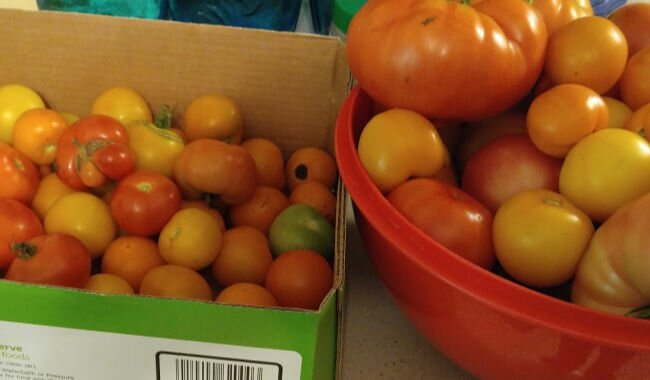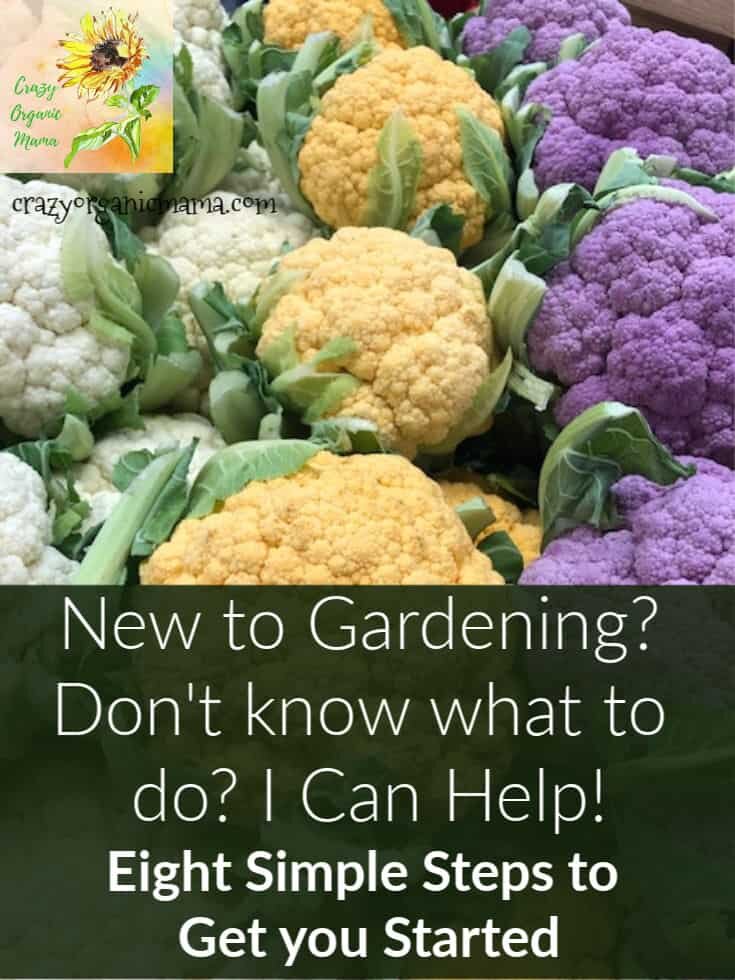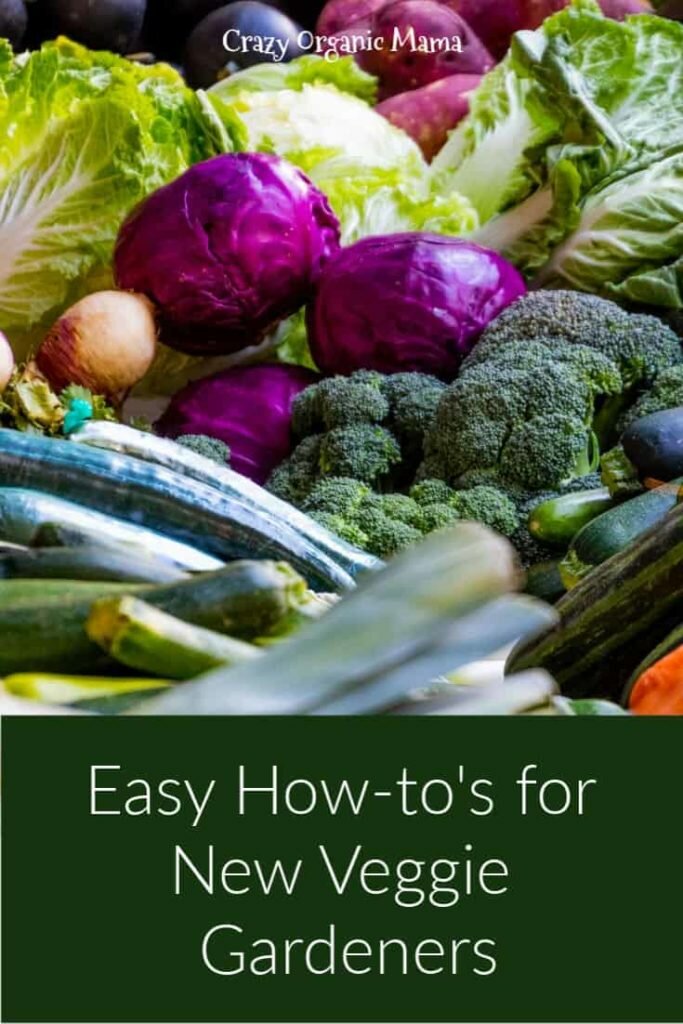Getting your New Vegetable Garden off to a Great Start
I’m just gonna be brutally honest right off the top here, ok? This isn’t a top whatever list that’s going to say, Just do what I tell you, and even though you’re totally new to vegetable gardening, in only minutes a day, you’ll have the perfect, Pinterest-ready garden of your dreams in one season!
Sorry, vegetable gardens (and gardens in general) don’t work like that. But it breaks my heart when I hear people say “Oh, I’d love to garden but I have a black thumb and I kill everything.” Anyone can garden successfully. All you need is a little education and some dedication.
Tip 1: Your Garden Won’t be Perfect….but it will be yours
You are NOT going to have the perfect, Pinterest-ready vegetable garden in just one season. In fact, you may not have it in 2 seasons, or 3 seasons, or ever. Seriously, if that’s your aim, hire somebody and pay them lots of money to make it look pretty.
Trust me, aside from sheer dumb luck, that’s the only way you’re going to get a vegetable garden like that. Each garden is messy, and dirty, and imperfect, and totally unique.
When you put in the work, it is completely yours, not Pinterest’s, yours….and you’ll think it’s the most beautiful thing you’ve ever seen. I promise.

(P.S. ~ If you would like the super easy, DIY plans to make your own trellises like the ones in the picture above, head on over here and sign up. You’ll receive the FREE plans, plus access to my FREE Resource Library with lots of other goodies too.)
Tip 2: Trying to Control Everything is Just Going to Drive you NUTS!
You can control these
There are a ton of variables in gardening. Think about it. What CAN you control? You can pick the varieties you want to plant, you can amend your soil and make it the best soil you possibly can, you can water on a set schedule to try to keep your plants evenly moist and happy.
These? Not so much
What CAN’T you control? Pretty much everything else…..How many sunny days there are, how many cloudy days there are, how many times it rains 3 hours AFTER you water your garden.
How about the 16 new varieties of squash bugs that move in when you’re not looking? Just kidding, it will be more like 30.
How about the temperature? Too hot, too cold, maybe just right, if you’re really, really lucky and channeling your inner Goldilocks that day.
The groundhogs that burrow under the 6 different layers of fence you put up to keep the rabbits out. Or the birds that fly in and eat all your raspberries when your back is turned, 10 minutes before you were going to pick them.
So, what have we learned, kids? The list of things you CAN control is MUCH shorter than the list of things you CAN’T control. So what’s a new, fledgling, barely-got-her-hands-dirty gardener to do?
Tip 3: Make a Plan
PLAN, PLAN, PLAN for some of those things you can’t necessarily control. For instance, you can’t control how often it’s going to rain right after you watered your plants, but you CAN check the weather forecast. If it says rain and your plants aren’t desperately in need of water, wait the extra day to see if the rain happens.
Those raspberries can be protected by netting, just don’t cover them until after they’re done blossoming because you want the bees to be able to pollinate them.
You can’t control how much sun you get, but you can plant those vegetables that benefit from a bit less sun in the shade of something that absolutely loves the maximum amount it can possibly get. So, for instance, put your lettuce in the shade from your pole beans or corn.
Tip 4: Learn, Learn and then Learn Some More
This brings me to my next point. Learn as much as you can about the vegetables you want to grow. Read blogs like mine or go to the library and get some books on organic vegetable gardening, or both!
There’s also good basic information on the back of most vegetable packets (if those little packets are more puzzling than helpful, you might want to visit my post on How to Read a Seed Packet for some help).
You’ll find out how much sun they need, when they should be planted, how long you have to wait for the little guys to pop their heads through the soil (which, of course, is the most exciting thing EVER, second only to when you can harvest your very first zucchini, tomato, pumpkin, whatever.)

Tip 5: Keep It Simple…..Sweetie
Because you want to have a decent working knowledge of the needs of the veggies you’re growing, for the first couple of years, follow the K.I.S.S. principle, Keep It Simple, Sweetie (I’m being nice, ok?)
Don’t set out to grow 16 different varieties of veggies your first season out. Start with just a few of your favorites and then branch out from there.
So how do you choose which veggies to start with? First, pick the ones you and your family are most likely to eat. If you hate green beans, DON’T GROW GREEN BEANS! (see how easy that was?).
Conversely, if the thought of a garden tomato makes you drool a puddle on your keyboard as you’re looking at all those online seed catalogs, GROW TOMATOES!
If you have zero experience growing vegetables, I wouldn’t recommend more than maybe 5 different veggies your first season. Peas, beans, radishes and lettuce are all fairly easy for a beginning gardener.
Tomatoes are great, but trying to grow heirloom varieties right out of the gate could end in frustration. They can be really finicky; as in, I harvested 315 lbs of tomatoes out of my home garden in 2017. I couldn’t give them away fast enough. In 2018, they all, and I do mean ALL, rotted on the vines.
You’re better off with something like Super Sweet 100’s. They’re a variety of cherry tomato that is absolutely yummy and grows easily in many conditions, including in containers, if that’s all you have available.

Tip 6: Grow your Veggies in Containers
This post contains affiliate links. When you purchase through one of these links, I earn a small commission. This does not affect your purchase price.
Containers are totally acceptable to grow veggies in. In fact, I published a whole entire post on how to grow a vegetable garden in containers, if you’d like to read it. If you don’t have the space for a huge garden, containers work just fine, as long as you can give the veggies the sun and water they need.
Again, radishes, lettuce, cherry tomatoes and even zucchini can be grown in containers. You can grow cucumbers, green beans and peas in containers, but if they’re the climbing varieties, you’re going to have to figure out a way to give them support. Ditto for large tomato plants. It can be done, it just might be a bit more complicated. It goes back to knowing your variety and whether and how much support they require.
Just keep in mind that containers do dry out easily and you’ll need to be good about checking them every day in hot weather.
I found some really cool-looking containers on Amazon. Keep in mind that I have not used these personally so can’t attest to their quality, but they come in multiple sizes and either a 5 or 10 pack (at least as of the date of this writing) for a very reasonable price, so you might want to give them a shot if you need containers. Check them out here.
Herbs do Great in Containers
Herbs lend themselves beautifully to container gardening, whether they be thyme, oregano, basil, rosemary, or pretty much any other herb you can think of.
As far as mint goes, in fact, I would highly recommend that you ALWAYS grow anything from the mint family in a container. IT WILL SPREAD far and wide in the ground, more extensively than you could ever begin to imagine, and you will NEVER get rid of it all. NEVER. (Don’t say I didn’t warn you!)
Herbs can also be grown indoors year-round. If you’d like some tips on that, check out Indoor Herb Growing here.
Tip 7: Companion Planting
If you still really want that pretty garden, grow some flowers among your vegetable plants. It’s beneficial for vegetables to have flowers growing nearby, because the flowers will attract the pollinators the veggies need. This is called companion planting. The full science of it is complicated, and fodder for another later blog post (or 5!), but suffice it to say that any flowers you plant with your veggies will be a good thing. If they’re native to your area, bonus points.
There are tons of resources online to find plants native to your area. For instance, if you live in CT, like I do, you can go here, but there are resources for every state, you just need to dig a little (haha, dig a little, get it? Sorry, I thought it was punny…..Ok, ok, sorry, moving on….)
Just keep in mind that natives may be more likely to spread, so if you don’t want that to happen, put them in containers and watch for seedpods so you can cut them off before they open.

Tip 8: Just. Get. Started.
Listen really carefully to this, it’s the key to it all. OK, are you listening? Really, really closely? Promise?? Here it is, THE BIG SECRET: Don’t stress about making your garden perfect.
JUST. START. GARDENING.
Have fun with it. Learn as much as you can, but don’t wait until you know everything or you will NEVER get started.
Get out in the warm sunshine and get dirt under your nails. Play with the earthworms, watch for those first magical little green shoots. Get dirty and sweaty and tired and sore, and have a wonderful, wonderful time. Because really, at the end of the day, that’s what matters.
And when you bring that first tomato/zucchini/green bean/radish into the house, you can announce to whoever is there (even if it’s the cat, the dog or the hamster), “Today, I am officially a gardener.”
Related Beginning Gardening Posts
If you haven’t already signed up for my email list, you can do that here. No spam, I promise (I hate it as much as you do!). You’ll get a blog newsletter every week and INSTANT access to my FREE Resource Library with lots and lots of goodies!
I hope I’ve helped you and encouraged you to start your journey. If so, please leave me some comment love, and if you’re on Pinterest, the images below are pinnable (and I’d appreciate it!) As always, smile and have a crazy organic day!





6 comments
Cannot stand dirt under my fingernails, but I loved this…practical, funny, easy to read and understand. Your personality comes through in your writing. I will never be a gardener (totally black thumb) but I will continue to enjoy reading your blog!!!
Haha, you’re funny! You know, you could always wear gloves……but thanks for the kind words.
I loved this. So many people panic over being perfect when they should be having fun. Hope your garden blooms beautifully x
Thank you! It’s so true, there is nothing better than getting out in the sunshine and getting dirt under your nails. And if your garden doesn’t look like anyone else’s? That’s ok! It’s yours!
Hi Dawn, great post, and oh so true…I live in Alaska, so we have a truncated growing season, but if you pick the right veggies, the do grow like crazy with the long, long days! Biggest bummer is you really have to start almost everything inside, and one late frost can set you back for the whole season! Happy digging (I liked your pun, haha).
Glad you liked my pun! What zone are you in there? It must be really tough! Thanks for commenting.